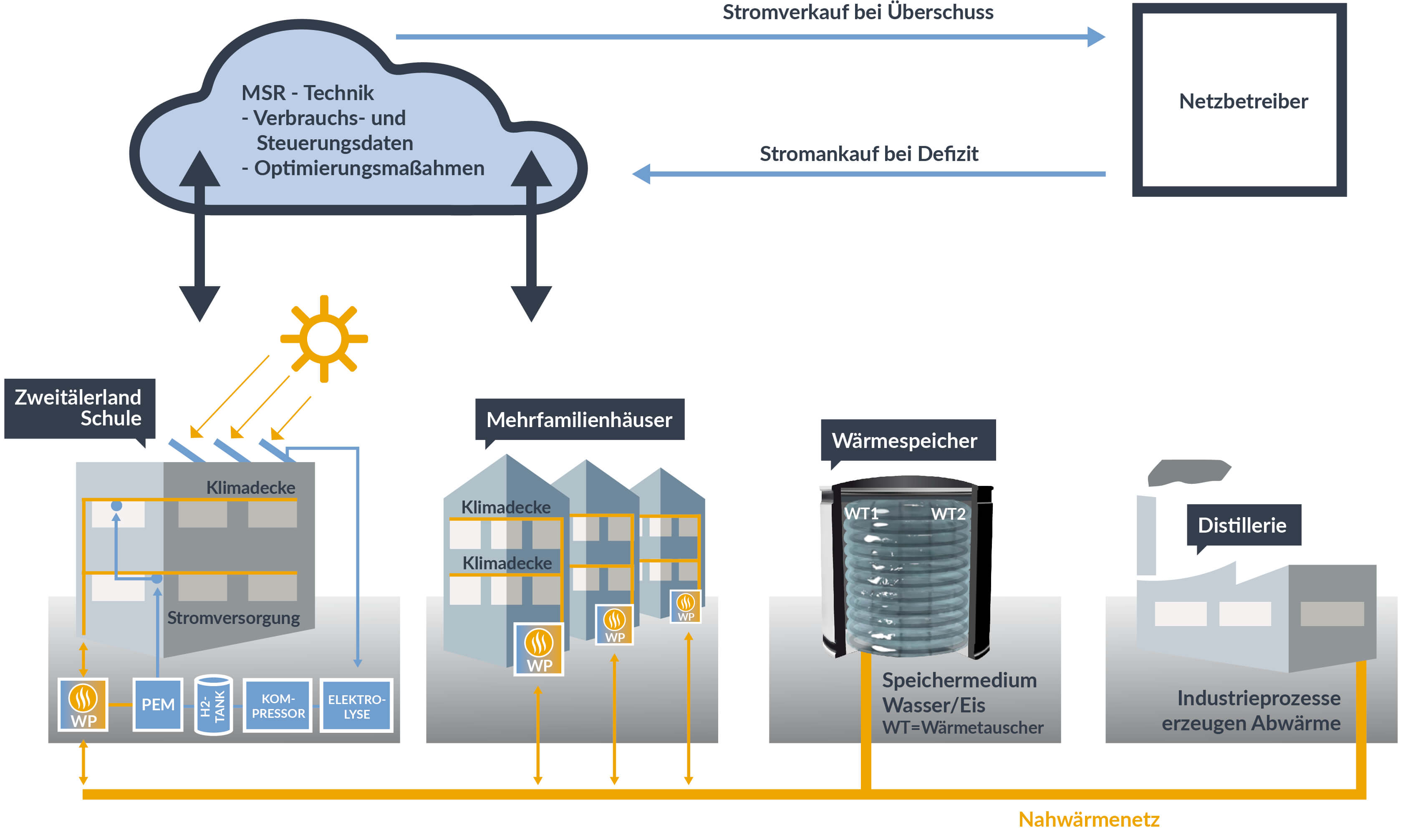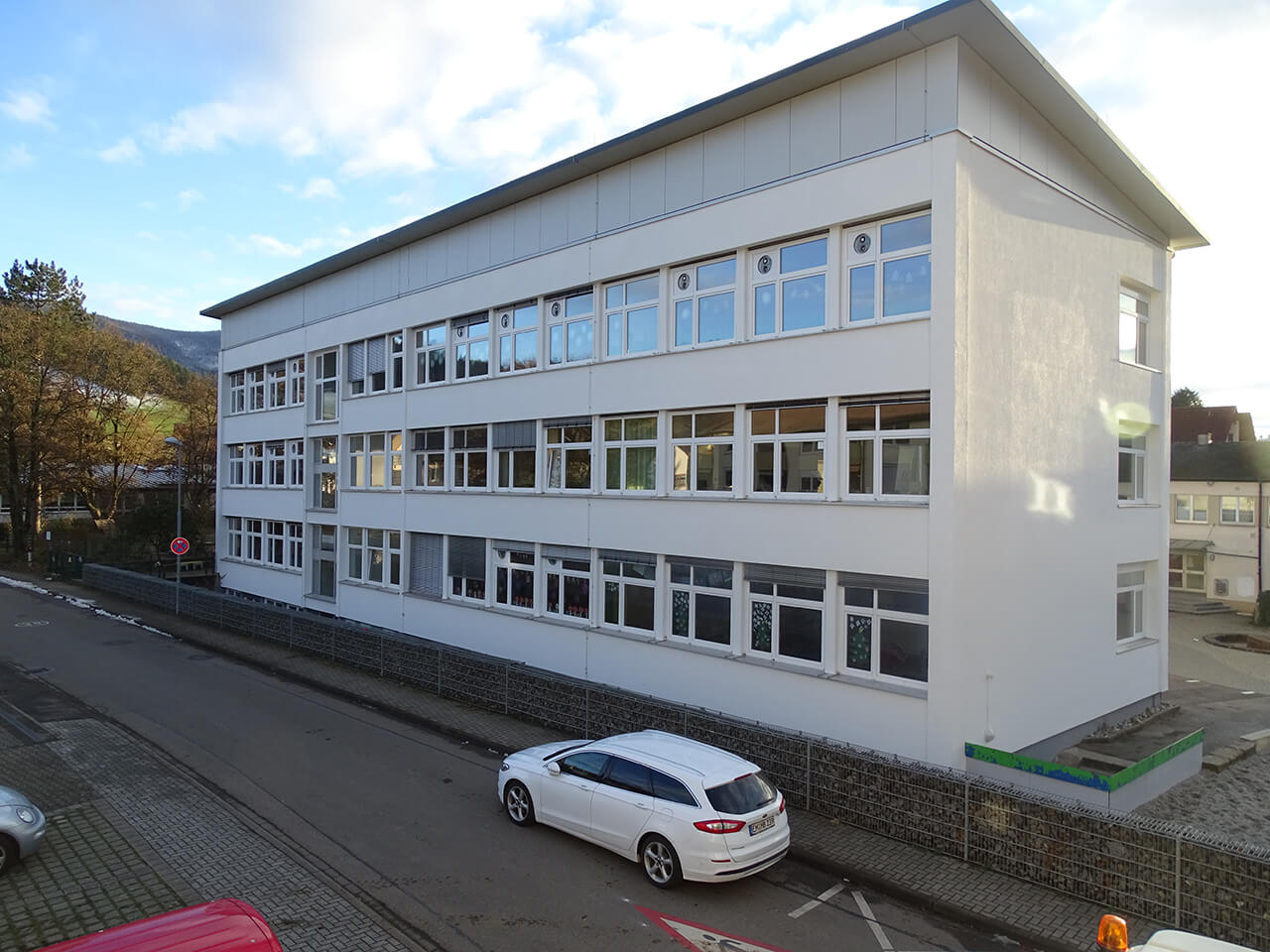| Duration: | 08/2020 - 07/2024 |
| Contracting Authority/ Sponsors: | Federal Ministry of Economic Affairs and Climate Action (BMWK) |
| Project Partners: | Gemeinde Gutach im Breisgau; Caldoa GmbH; aleon GmbH; Scholze-Thost GmbH; CUTEC (TU Clausthal) |
| Project Focus: | |
ISWK – Innovative power and heat concept in »Zweitälerland«
In the joint project "ISWK-Innovatives Strom- und Wärmekonzept im 'Zweitälerland'" (ISWK-Innovative electricity and heat concept in the 'Zweitälerland'), the Fraunhofer Institute for Solar Energy Systems ISE is coordinating the conception, implementation and measurement of the electricity and heat supply for an existing municipal district. The implementation concerns a school and several multi-family buildings in the municipality of Gutach im Breisgau and plans to use waste heat from a distillery at a low temperature level as the source of a heat pump. To buffer the fluctuating supply of waste heat, the use of an ice storage is foreseen. Based on this practical example, the project develops and tests simplified BIM methods in the context of small renovation objects as well as the smart control of the energy supply of the district.
An electricity and heating concept is being drawn up for the association of several municipal buildings in Gutach im Breisgau that meets the climate-neutral standard for buildings in 2050. The heat demand of the Zweitäler school is to be covered by a heat pump that uses industrial waste heat from the Elztal distillery as a low-temperature heat source. From this, it will be fed into an ice storage tank to which the heat pump will be connected on the source side. The municipal multi-family apartment buildings located along the planned local heating pipelinewill also be connected to the low-temperature heat source. Climate ceilings will be installed to replace the conventional radiators. This will enable efficient operation of the heat pump system by lowering the flow temperatures in the heating system. As a result of the refurbishment and renewal of the school's heat supply, CO2 emissions for building heating are expected to fall by around 75 percent.
A solar system will be installed on the roofs of the school. With a usable area of 420 m2, an annual electricity generation of about 95 MWh is possible, of which about 20 percent can be used directly in the school. To increase the self-consumption rate, the connection of an electrolyzer is planned. The hydrogen produced will be stored and serve as a decentralized storage facility for the PV electricity. The hydrogen produced can be converted back into electricity in winter and the waste heat generated in the process can also be used to heat the school.
An energy management system (EMS) ensures the optimized operation of this flexible plant park, which can be used to offer additional system services such as control power or the purchase of electricity in the event of negative electricity prices. Forecast-based control algorithms are being developed and tested for grid-serving operation.
Another focus of the project is the use and further development of integral planning procedures. Facility and building data for refurbishment objects are often only available in an incomplete and unstructured form. Here, the project aims to develop a methodology for digitally supported, structured inventory and management of building and facility data that can also be transferred to other construction projects (extension of the "simple BIM" methodology).
The project "ISWK "(FKZ 03EGB0026) is funded by the Federal Ministry for Economic Affairs and Energy based on a resolution of the German Bundestag.

